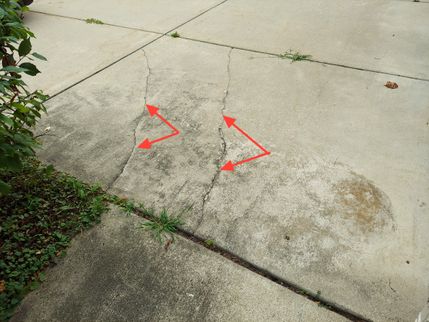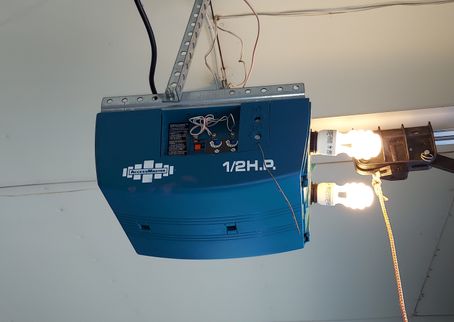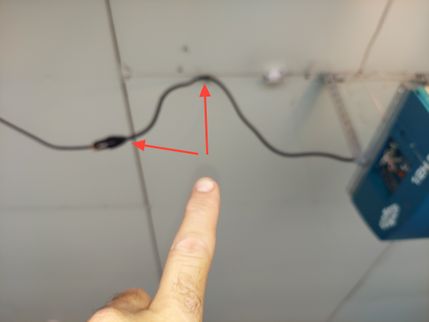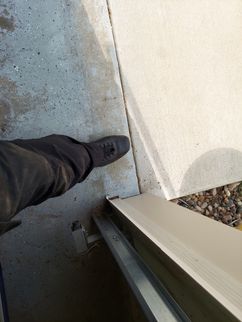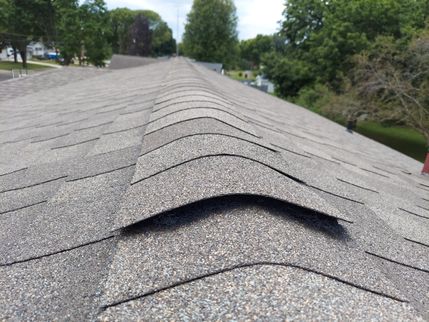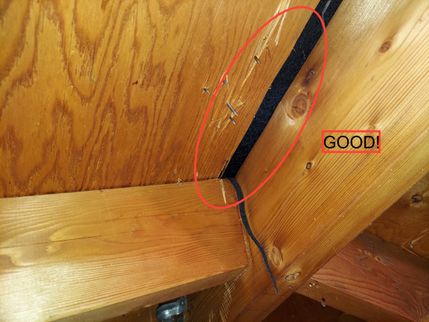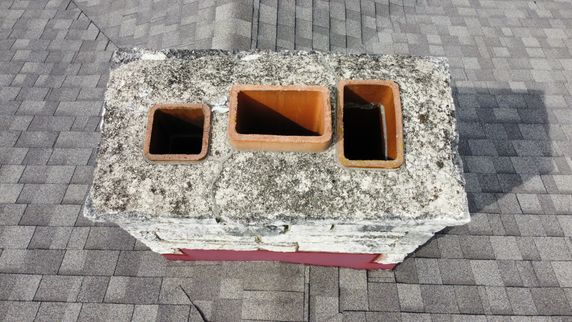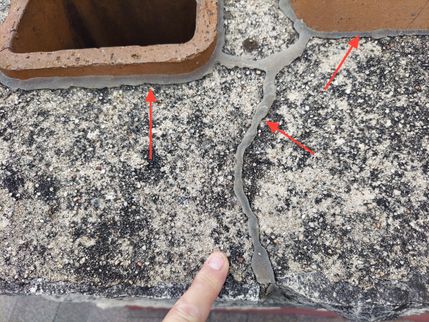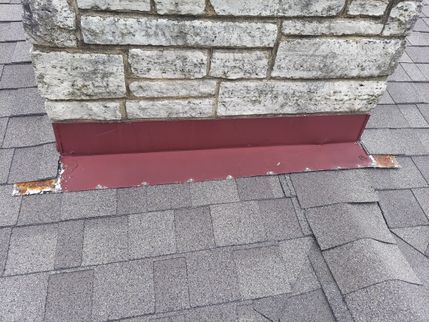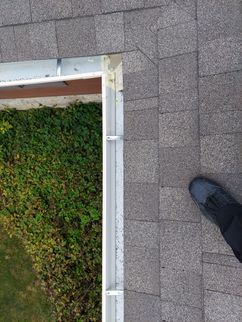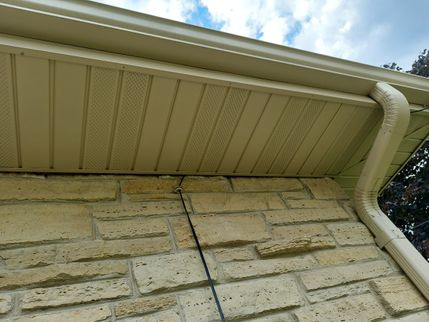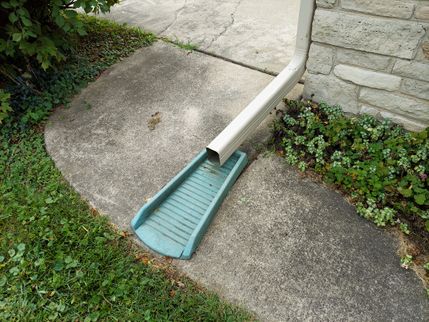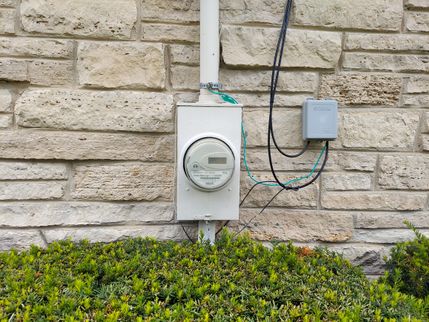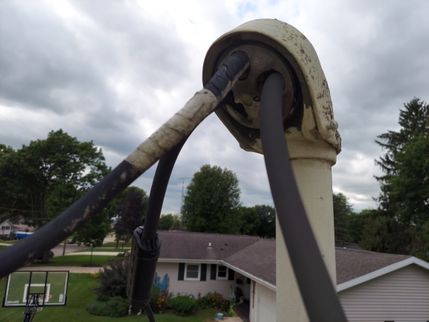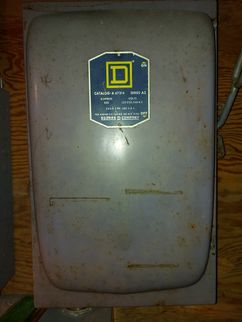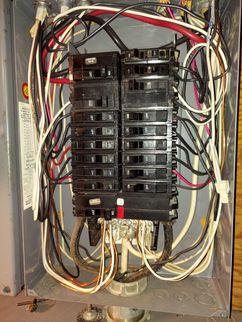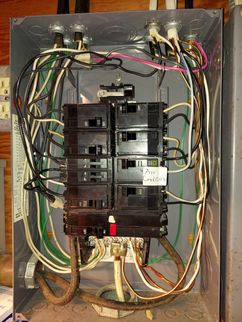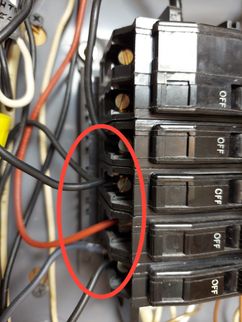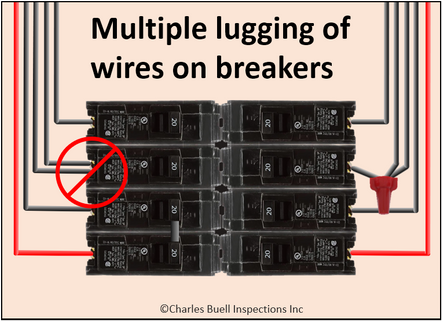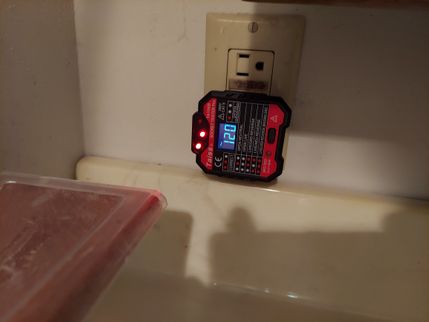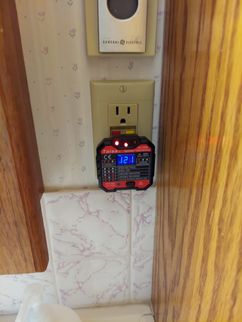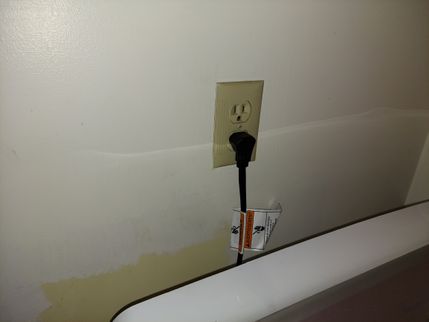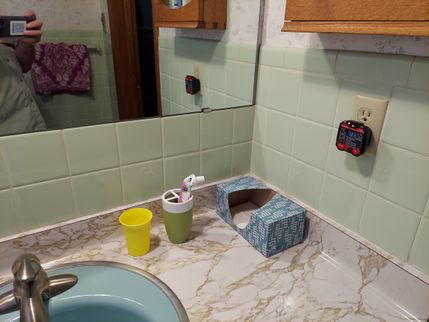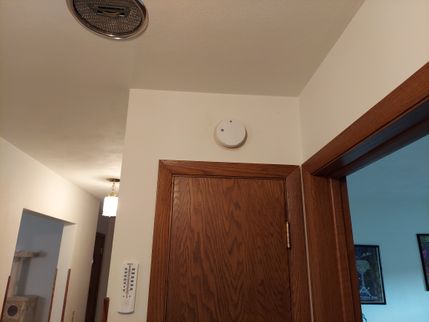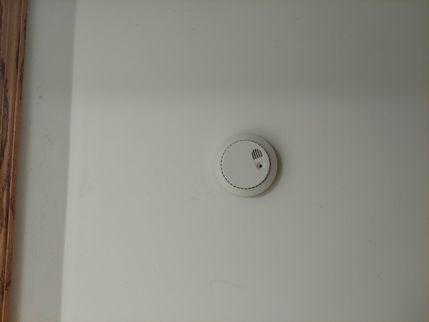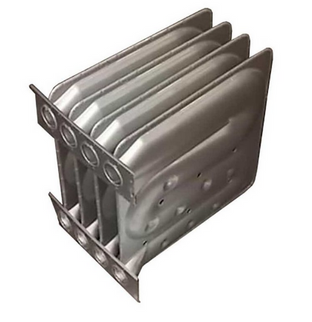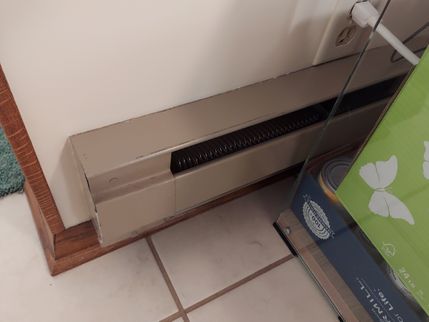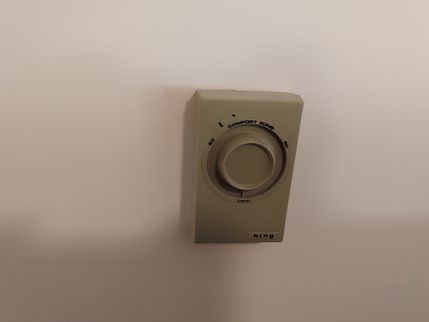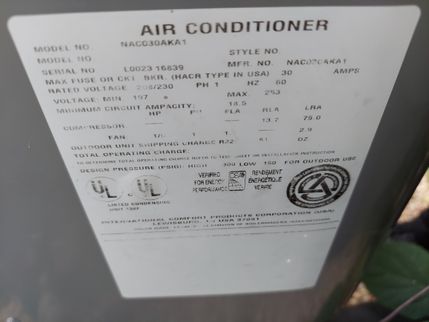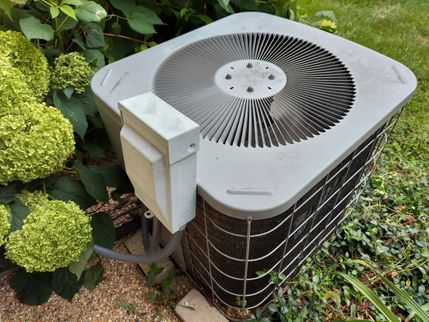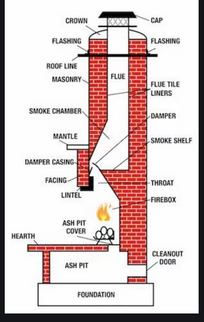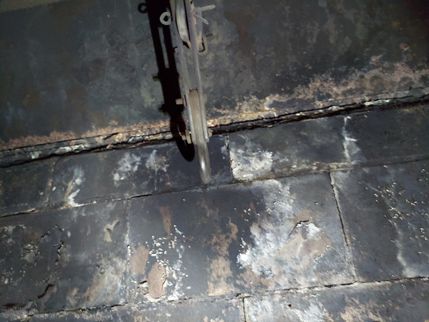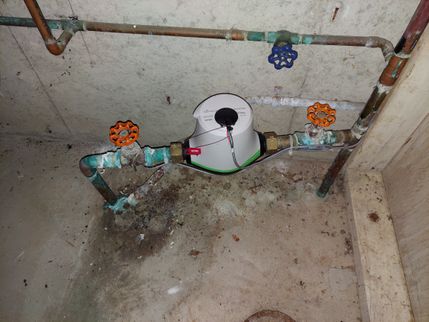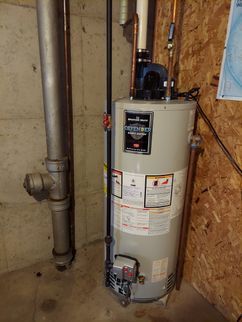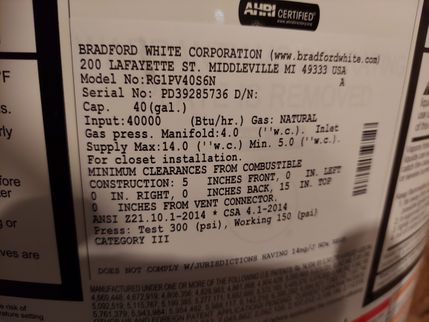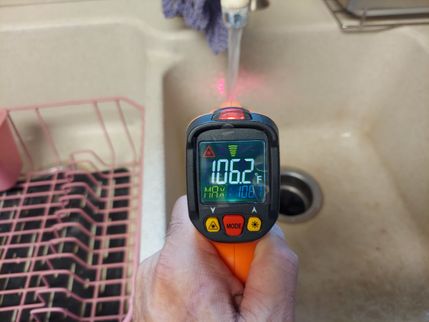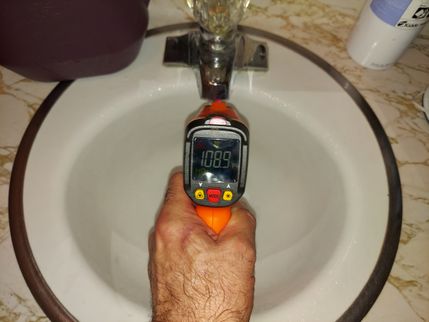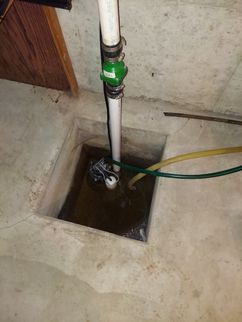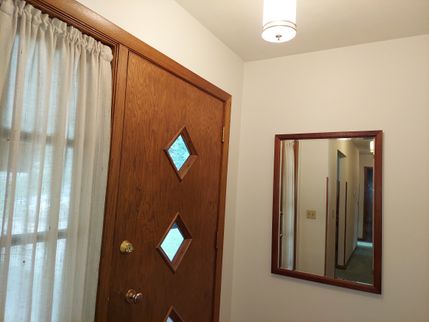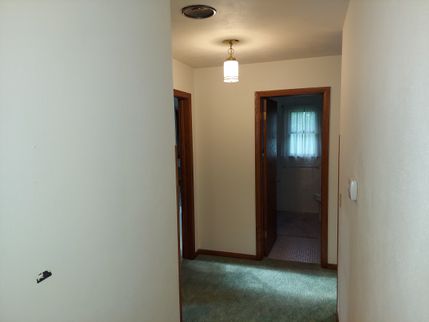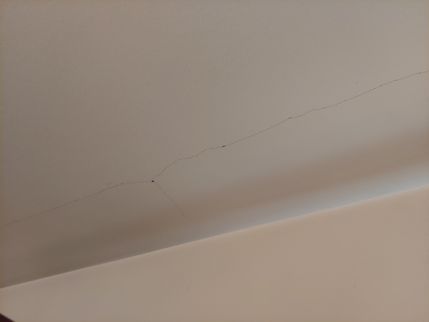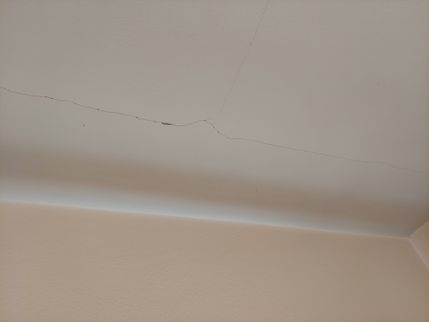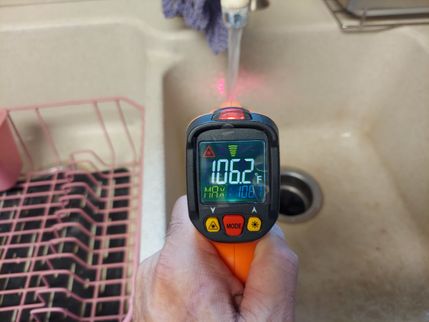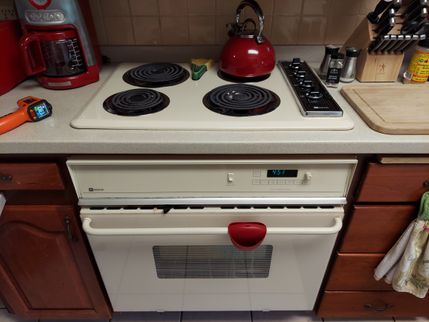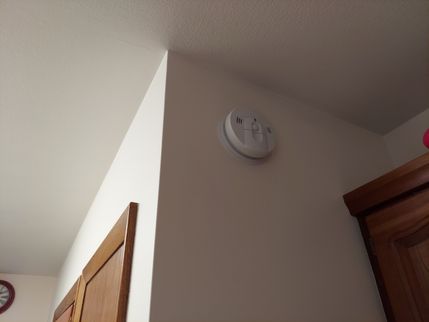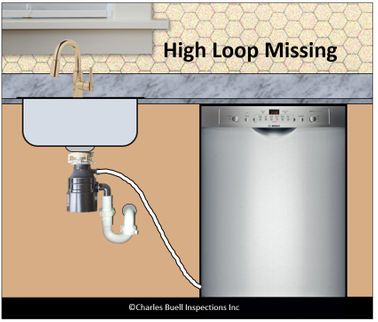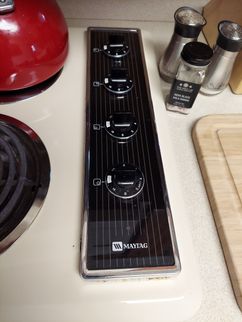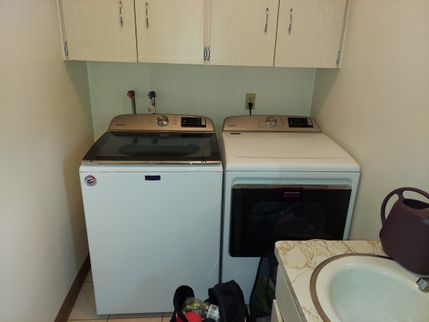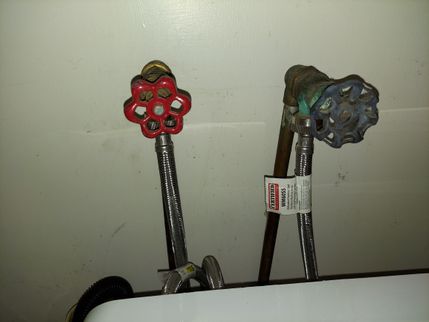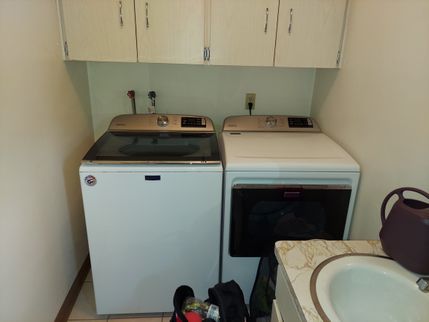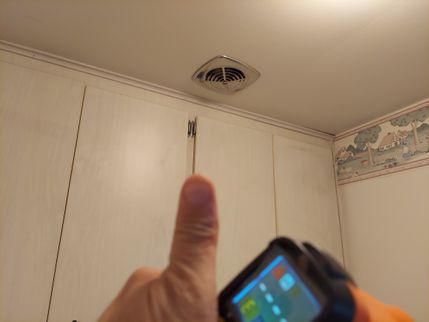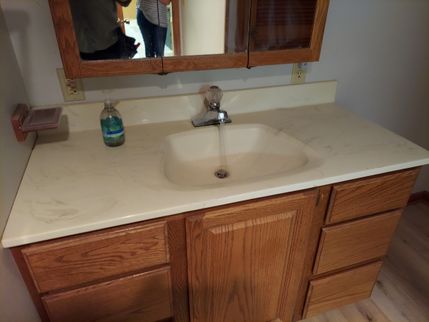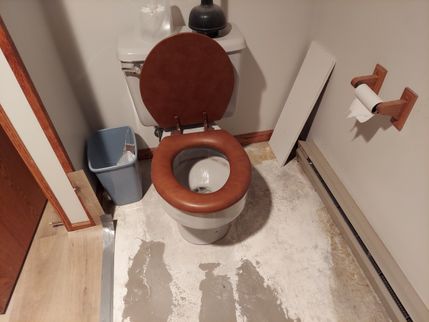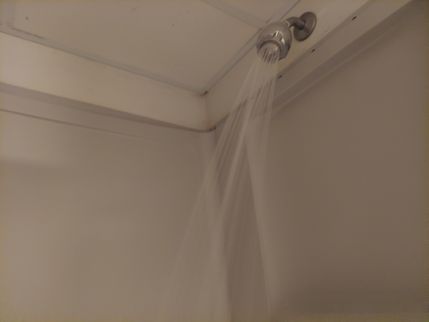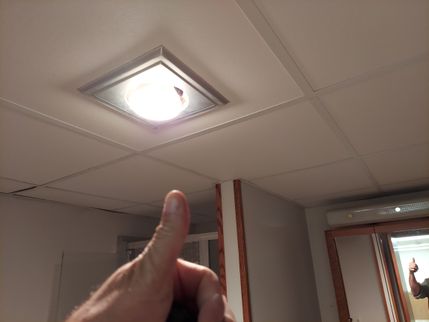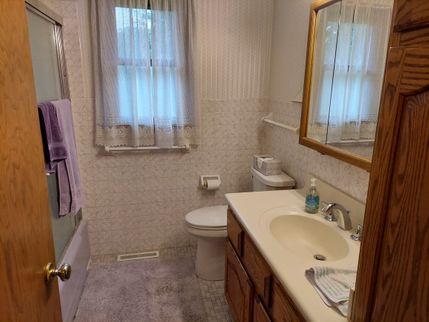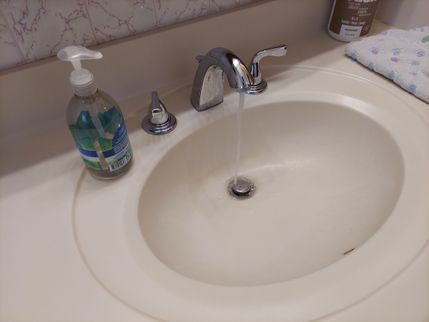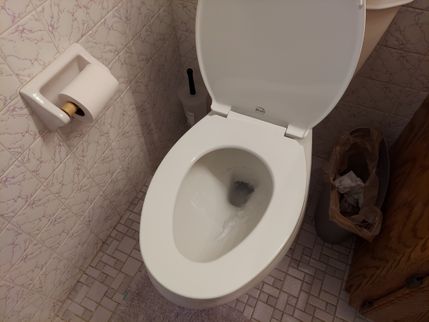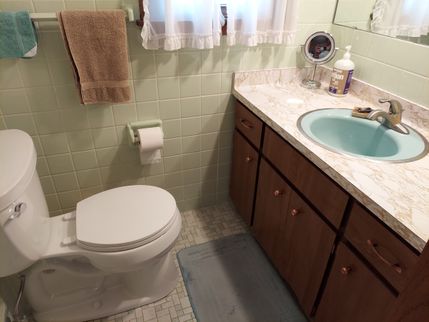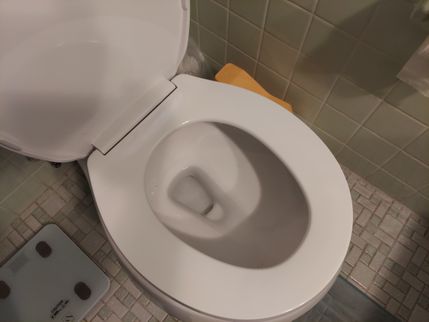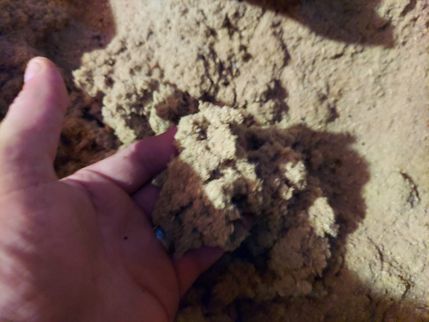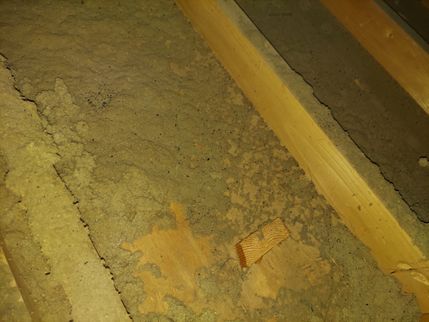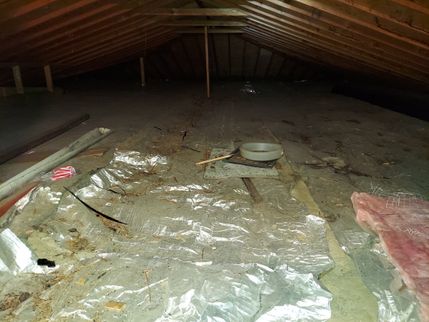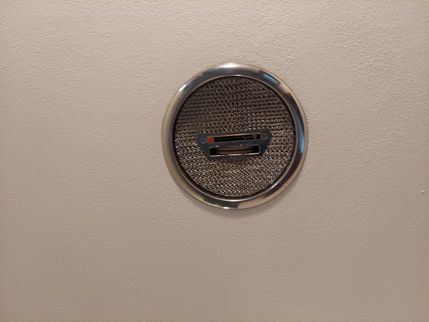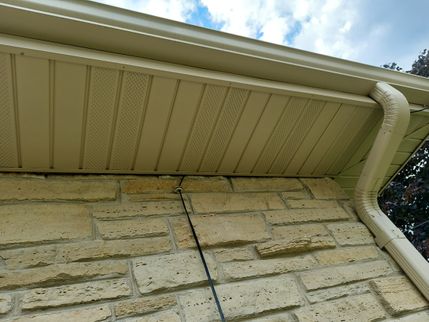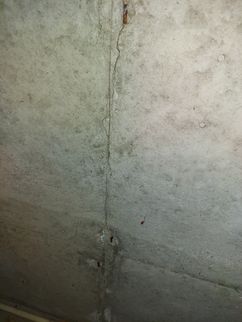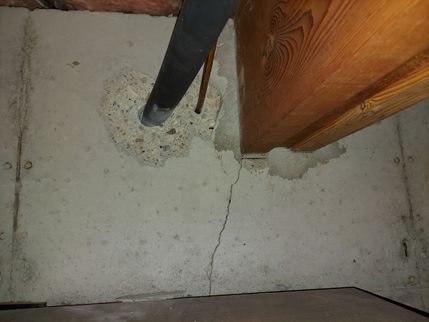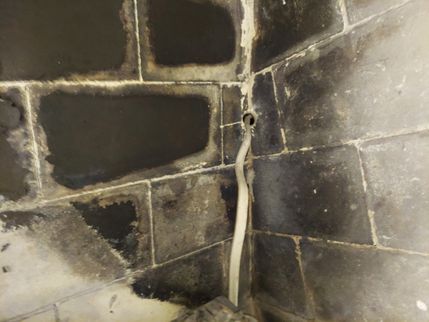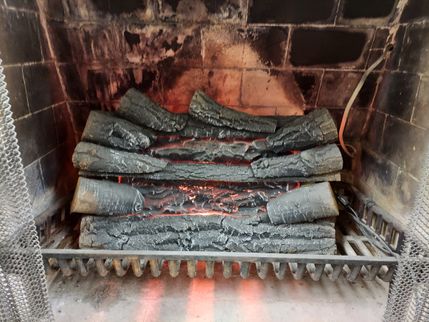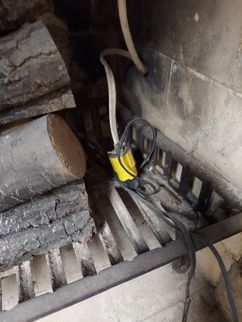The Scope and Purpose of a Home Inspection
Purchasing property involves risk
The purpose of a home inspection is to help reduce the risk associated with the purchase of a structure by providing a professional opinion about the overall condition of the structure. A home inspection is a limited visual inspection and it cannot eliminate this risk. Some homes present more risks than others. We cannot control this, but we try to help educate you about what we don’t know during the inspection process. This is more difficult to convey in a report and one of many reasons why we recommend that you attend the inspection.
A home inspection is not an insurance policy
This report does not substitute for or serve as a warranty or guarantee of any kind. Home warranties can be purchased separately from insuring firms that provide this service.
A home inspection is visual and not destructive
The descriptions and observations in this report are based on a visual inspection of the structure. We inspect the aspects of the structure that can be viewed without dismantling, damaging or disfiguring the structure and without moving furniture and interior furnishings. Areas that are concealed, hidden or inaccessible to view are not covered by this inspection. Some systems cannot be tested during this inspection as testing risks damaging the building. For example, overflow drains on bathtubs are generally not tested because if they were found to be leaking they could damage the finishes below. Our procedures involve non-invasive investigation and non-destructive testing which will limit the scope of the inspection.
This is not an inspection for code compliance
This inspection and report are not intended for city / local code compliance. During the construction process structures are inspected for code compliance by municipal inspectors. Framing is open at this time and conditions can be fully viewed. Framing is not open during inspections of finished homes, and this limits the inspection. All houses fall out of code compliance shortly after they are built, as the codes continually change. National codes are augmented at least every three years for all of the varying disciplines. Municipalities can choose to adopt and phase in sections of the codes on their own timetables. There are generally no requirements to bring older homes into compliance unless substantial renovation is being done.
This is just our opinion
Construction techniques and standards vary. There is no one way to build a house or install a system in a house. The observations in this report are the opinions of the home inspector. Other inspectors and contractors are likely to have some differing opinions. You are welcome to seek opinions from other professionals.
The scope of this inspection
This inspection will include the following systems: exterior, roof, structure, drainage, foundation, attic, interior, plumbing, electrical and heating. The evaluation will be based on limited observations that are primarily visual and non-invasive. This inspection and report are not intended to be technically exhaustive.
Your expectations
The overall goal of a home inspection is to help ensure that your expectations are appropriate with the house you are proposing to buy. To this end we assist with discovery by showing and documenting observations during the home inspection. This should not be mistaken for a technically exhaustive inspection designed to uncover every defect with a building. Such inspections are available but they are generally cost-prohibitive to most homebuyers.
Your participation is requested
Your presence is requested during this inspection. A written report will not substitute for all the possible information that can be conveyed verbally by a shared visual observation of the conditions of the property.
How to Read This Report
Getting the Information to You
This report is designed to deliver important and technical information in a way that is easy for anyone to access and understand. If you are in a hurry, you can take a quick look at our "Summary Page” and quickly get critical information for important decision making. However, we strongly recommend that you take the time to read the full Report, which includes digital photographs, captions, diagrams, descriptions, videos and hot links to additional information.
The best way to get the layers of information that are presented in this report is to read your report online, which will allow you to expand your learning about your house. You will notice some words or series of words highlighted in blue and underlined – clicking on these will provide you with a link to additional information.
This report can also be printed on paper or to a PDF document.
Chapters and Sections
This report is divided into chapters that parcel the home into logical inspection components. Each chapter is broken into sections that relate to a specific system or component of the home. You can navigate between chapters with the click of a button on the left side margin.
Most sections will contain some descriptive information done in black font. Observation narrative, done in colored boxes, will be included if a system or component is found to be significantly deficient in some way or if we wish to provide helpful additional information about the system or the scope of our inspection. If a system or component of the home was deemed to be in satisfactory or serviceable condition, there may be no narrative observation comments in that section and it may simply say “tested,” or “inspected.”
Observation Labels
All narrative observations are colored, numbered and labeled to help you find, refer to, and understand the severity of the observation. Observation colors and labels used in this report are:
- Major Concern:Repair items that may cost significant money to correct now or in the near future, or items that require immediate attention to prevent additional damage or eliminate safety hazards.
- Repair:Repair and maintenance items noted during inspection. Please note that some repair items can be expensive to correct such as re-finishing hardwood floors, but are considered simply repair items due to their cosmetic nature.
- Recommended Maintenance:These are repair items that should be considered "routine home ownership items," such as servicing the furnace, cleaning the gutters or changing the air filters in the furnace.
- Improve:Observations that are not necessarily defects, but which could be improved for safety, efficiency, or reliability reasons.
- Monitor:Items that should be watched to see if correction may be needed in the future.
- Due Diligence:Observation such as a buried oil tank that may require further investigation to determine the severity and / or urgency of repair.
- Future Project:A repair that may be deferred for some time but should be on the radar for repair or replacement in the near future.
- Efficiency:Denotes observations that are needed to make the home more energy efficient as well as to bring the home up to modern insulation standards. This category typically includes windows and insulation. Other items, such as lighting and appliances, are not inspected for their energy status.
- Completed:Items that were initially an issue but have since been completed.
- Note:Refers to aside information and /or any comments elaborating on descriptions of systems in the home or limitations to the home inspection.
- Description:Detailed description of various aspects of the property noted during the inspection.
Summary Page
The Summary Page is designed as a bulleted overview of all the observations noted during inspection. This helpful overview is not a substitution for reading the entire inspection report. The entire report must be read to get a complete understanding of this inspection report as the Summary Page does not include photographs or photo captions.
Summary
Repairs
- G-2 Grounds:
Typical cracks were noted in driveway flatwork. No immediate repair appears necessary, though water will continue to deteriorate the surface until the driveway is repaired or replaced. Regular sealing of small to moderate cracks with a quality exterior flexible sealant can minimize water penetration and prolong the life of the flatwork.
- G1-1 Garage:
The garage door opener was connected to an extension cord running to the wall outlet. Extension cords are limited to temporary uses. A garage door opener is a permanently installed appliance. This is a defect and should have a permanent receptacle placed (in the ceiling usually) within reach of the supplied cord and installed in an approved manner.
- ES-5 Electric Service:
Hire a licensed electrical contractor to correct the double-tapped or double-lugged conductors in the electric panel; this is when two conductors share the same lug- see left side breakers. Most manufacturers of circuit breakers do not allow two conductors in one breaker. The breakers here do not look rated for two conductors. Double-lugged breakers risk poorly protected conductors that are more vulnerable to arcing and overheating. Running more than one appliance off of the same breaker can cause it to trip. Please note that a simple pigtail is often used for a repair - see the illustration included here.
- EDFW1-1 Electric Distribution and Finish Wiring:
The use of GFCI (Ground Fault Circuit Interruption) protection is inconsistent with modern minimum standards for safety. GFCI protection is recommended for the electrical receptacles in the following locations: the two dedicated kitchen appliance circuits, all receptacles within 6 feet of a sink, bathrooms, exterior, garage, unfinished basements, laundry and all wet and damp locations. GFCI's protect against electrocution by limiting the duration of an electrical shock. These are an important modern safety feature that have proven to save lives. Hire a licensed electrician to further evaluate and update GFCI protection for improved safety. Examples of observations noted during inspection include:
- EDFW1-3 Electric Distribution and Finish Wiring:
The installation of carbon monoxide alarms is recommended for all homes that have fuel burning appliances such as gas or oil furnaces, gas water heaters, gas ovens and cook-tops, gas fireplaces and wood stoves. In addition, Wisconsin State law states: "the owner of a dwelling shall install a functional carbon monoxide detector in the basement of the dwelling and on each floor level except the attic, garage, or storage area of each dwelling unit. A carbon monoxide detector wired to the dwelling's electrical wiring system shall have a backup battery power supply. Except as provided under par. (b), the occupant of the dwelling unit shall maintain any carbon monoxide detector in that unit." - though requirements are for the installation to meet manufacturer's specifications. Carbon monoxide is a colorless, odorless gas that can cause sickness, nausea and even death. Alarms have a useful service life of roughly 6 years, so changing them more frequently than smoke alarms is recommended.
- K-2 Kitchen:
An air gap is recommended to protect the dishwasher from accidental contamination if the sewer line were to back up. If an air gap cannot be installed, at least run the drain line above the level of the sink drain to create a high loop. This was an older way of protecting the dishwasher. Hire a licensed plumber to install an air gap.
- SB-4 Structure and Basement:
The firebox in the basement has been converted to an electric, decorative log set. The power supply has been routed directly from a sub-panel, through the walls and a hole, drilled into the corner of the firebox. This is a safety concern. Wiring should be contained in a mounted junction box with a proper receptacle and should be corrected.
Recommended Maintenance Items
- I-2 Interior:
Minor blemishes such as small cracks were noted in the ceiling and walls. These types of finish issues can be due to routine settlement or moderate seasonal expansion and contraction of the structure or even related to the workmanship of the framing or installation of the drywall. The seasonal types of cracking can be the most frustrating as they will tend to re-open after repair. There are certain stress points in a house where cracking is common, for example where large beams land into a wall. There are other areas where nail pops are common such as the 2nd floor at wall junctures where the roof is framed with a truss system. Repair and paint cracks, nail pops, and other blemishes as needed and monitor. I did not find any cracking or defects today that look consistent with structural problems. Examples of observations noted during the inspection include these in the master bedroom. Monitor for any further degradation.
Monitors
- HCFV-1 Heating, Cooling, Fireplaces and Ventilation:
This building has electric baseboard heaters. These can get very hot during operation. Be sure to keep all drapes, curtains, furniture, electric cords and other flammable items away from these heaters when they are on. Also be careful with small children to avoid a burn hazard.
Due Diligences
- RCG-1 Roof, Chimney and Gutters:
This is an installation which should be installed with double underlayment or a membrane below the shingles to prevent water from seeping back under the shingles and causing leaks. The installation of the membrane or paper below the shingles is not visible and cannot be inspected. No signs of prior leaks on this new installation were noted during inspection but this is just a one-time inspection; it is difficult to know how this installation will perform. Inquire with the installer if they have any warranty information regarding this roof - an estimate with a scope of work might help explain the preparation work that was done prior to installing these shingles.
- SB-1 Structure and Basement:
Minor to moderate cracks were noted in the poured concrete foundation. The purpose of the foundation is to connect the weight of the building to well-compacted soils below the house so that the house does not move or settle. Concrete cracking can indicate poorly compacted soils below the house which could require a repair, but small cracks can also be a sign of routine concrete shrinkage. It is not possible to determine or verify the cause of these cracks during a visual inspection. I recommend additional inspection of this structure by a qualified general contractor or structural engineer to determine the cost and urgency of repairs to prevent on-going settlement. The hope on older buildings is that poorly compacted soils below the foundation are now compacted by the weight of the building and no additional movement will occur. One of the better ways to prevent on-going settlement in buildings is to keep the soils around the house as dry as possible. Additional inspection by a specialist is needed to determine if repairs are needed to prevent additional movement or not. Please note that the scope and urgency of repairs for conditions like this can differ between contractors and you may want to seek more than one additional opinion.
Future Projects
- HCFV-2 Heating, Cooling, Fireplaces and Ventilation:
While still operational, this unit is nearing the end of its useful life. Recommend budgeting for replacement.
Efficiencies
- A-1 Attic:
Given the age of construction and visible observations I can tell this area is poorly insulated, air sealed and ventilated. The attic insulation could be improved to modern standards, which recommend R-49 on the floor and R-21 on walls. R-value is the measure of resistance to heat loss; the higher the R-value the better the insulation. During insulation repairs it is best practices to implement any air seal-up repairs to seal air leakage. Also, be sure you have completed any wiring or other projects that are needed in the attic. Then, hire an insulation contractor to improve thermal barriers.
Notes
- I-3 Interior:
This building was constructed prior to the early-1980's and may contain lead and/or asbestos. Lead is commonly found in paint and in some plumbing components in buildings built around or before 1978. The EPA does not recognize newer coats of paint as encapsulating older coats of lead-based paint. Asbestos is commonly found in various building materials such as insulation, siding, and/or floor and ceiling tiles. Laws were passed in 1978 to prohibit usage of lead and asbestos, but stocks of materials containing these substances remained in use for a number of years thereafter. Both lead and asbestos are known health hazards. Evaluating for the presence of lead and/or asbestos is beyond the scope of this inspection. Any mention of these materials in this report is made as a courtesy only, and meant to refer the client to a specialist. Consult with specialists as necessary, such as industrial hygienists, professional labs and/or abatement specialists for this type of evaluation. In general, the greatest risk of exposure is during renovation projects where these materials could become aerosolized.
- A-2 Attic:
Radiant Ceiling Heating System: The original electric radiant heating system is still in place, as are all of the controls throughout the house. The reflecting foil was covering the heating elements in the attic at the time of inspection, and I was unable to visually inspect these components. This system was not operated during the inspection. I would recommend further evaluation by a licensed electrician.
The Full Report
General Comments
Building Characteristics, Conditions and Limitations
Style of Home: Ranch
Type of Building : Single Family (1 story with Basement)
Approximate Square Footage: 2000
The approximate square footage listed here is listed as a courtesy and is based off of public records and disclosure. An evaluation of square footage of the buildings and property lines is beyond the scope of this inspection.
Approximate Year of Original Construction: 1960
Unless the wiring in the building has been fully updated, this building likely has wiring that predates the late 1980's. Branch circuit wiring installed in buildings built prior to the late 1980s is typically rated for a maximum temperature of only 60 degrees Celsius. This includes non-metallic sheathed (Romex) wiring, and both BX and AC metal-clad flexible wiring. Knob and tube wiring, typically installed in homes built prior to 1950, may be rated for even lower maximum temperatures. Newer electric fixtures including lighting and fans typically require wiring rated for 90 degrees Celsius. Connecting newer fixtures to older, 60-degree-rated wiring is a potential fire hazard. Repairs for such conditions may involve replacing the last few feet of wiring to newer fixtures with new 90-degree-rated wire, and installing a junction box to join the old and new wiring. It is beyond the scope of this inspection to determine if any such incompatible components are installed. Based on the age of this building, be aware that such components may be present.
In 1978, federal laws were passed to prohibit use of lead and asbestos in building materials. Manufacturers of building materials were allowed to sell existing stocks of materials that were manufactured with lead and asbestos, so even buildings constructed as late as the mid-1980's could possibly contain lead or asbestos. Identification and testing for lead and asbestos and other environmental testing is beyond the scope of this home inspection. If you wish to seek additional information, I recommend contacting an environmental lab or industrial hygienist.
Attending the Inspection: Homeowner
Occupancy: Occupied
Animals Present: Yes, Cat/s present
Weather during the inspection: Partly cloudy, Hot and Humid
Approximate temperature during the inspection: Over 80[F]
Ground/Soil surface conditions: Dry
For the Purposes of This Report, the Front Door Faces: South
This home was occupied at the time of the inspection. Inspection of occupied homes presents some challenges as occupant belongings can obstruct visual inspection of and access to parts of the building. We do our best during inspection to work around belongings to discover as much as possible about the house without moving or damaging personal property, however, the presence of personal items does limit the inspection.
Grounds
General Grounds Photos
Photos removed for privacy.
Drainage and Site
Clearance to Grade: Standard
Downspout Discharge: Above grade
Site Description: Moderate slope
Driveways/Walkways/Flatwork
Driveway: Concrete
Walkways: Pavers, Concrete
Patios: Concrete
Typical cracks were noted in driveway flatwork. No immediate repair appears necessary, though water will continue to deteriorate the surface until the driveway is repaired or replaced. Regular sealing of small to moderate cracks with a quality exterior flexible sealant can minimize water penetration and prolong the life of the flatwork.
Grounds, Trees and Vegetation
Grounds and vegetation appeared to have been taken care of well with regular maintenance.
Exteriors and Decks
Siding and Trim
Trim Material: Wood, Masonry
Siding Material: Wood, Stone
The wood and stone wall coverings and trim were observed to be in good condition.
Eaves
Vinyl
Exterior Doors
Solid core
Exterior Window Frames
Vinyl
Decks, Porches and Balconies
Present
Structure: Concrete
Garage
Garage General
Garage Type: Attached
Garage Doors and Automatic Openers
Overhead Garage Door Type: Metal
Automatic Garage Opener: Present
Garage Occupant Door: Solid Wood, Not Fire Rated
The garage door opener was connected to an extension cord running to the wall outlet. Extension cords are limited to temporary uses. A garage door opener is a permanently installed appliance. This is a defect and should have a permanent receptacle placed (in the ceiling usually) within reach of the supplied cord and installed in an approved manner.
Garage Floor
Garage Slab: Concrete
Roof, Chimney and Gutters
Roof Materials
Method of Roof Inspection: Walked on roof, Drone
Roof Style: Hip
Flashings: Present and Visually Standard
Roof flashings are used to keep a roofing system waterproof where the roofing material starts, stops, changes direction or is penetrated. During inspection, we look for standard flashing techniques that could be considered normal or standard in our region. Damaged, incomplete or non-standard flashings can be a sign of an older or less reliable roofing system and may require repair. Any non-standard flashings noted during inspection will be reported on below if found.
Roof Covering Materials: Three-tab composition shingle
Approximate Age of Roof Covering: New
Overlay Roof: No
This is an installation which should be installed with double underlayment or a membrane below the shingles to prevent water from seeping back under the shingles and causing leaks. The installation of the membrane or paper below the shingles is not visible and cannot be inspected. No signs of prior leaks on this new installation were noted during inspection but this is just a one-time inspection; it is difficult to know how this installation will perform. Inquire with the installer if they have any warranty information regarding this roof - an estimate with a scope of work might help explain the preparation work that was done prior to installing these shingles.
This popular plastic mesh type ridge vent shown in this photograph is popular where ridge vents are installed on new homes or as retrofits. Builders and owners like the ability to nail roof shingles over the easily-stored, transported, and installed roll-out plastic mesh that is simply laid across an opening cut along the building's ridge. While this lower-profile vent system is acceptable and functional, it does not move as much air as a higher-profile, rigid venting system. Noted no visible obstructions in the ridge opening from the attic space below.
Chimneys
Present
Chimney Material: Masonry
Chimney Flue Liners: Present
Overall, the chimney was in good condition. The flue liners did not show any signs of cracking, and the roof installers appear to have re-installed the chimney-roof step flashing properly. The silicone sealant filling the cracks on the crown has deteriorated and should be re-applied to prevent water intrusion into the brick structure.
Electric Service
Electric Service Equipment
Service Entrance (SE) conductor Size: Copper, 2/0, 200 amps
Main Panel Amperage: 200 amps
Electric Service Amperage: 200 amps
Main Electric Panel Location: Basement
Panel Manufacturer: Square D
Sub Panel
Service Conductor Size: Copper, #4, 60 amps
Sub Panel Amperage: 60 amps
Sub Panel Location: Basement
Sub Panel Manufacturer: Square D
Sub Panel 3
Service Conductor Size: Copper, #10, 30 amps
Sub Panel Amperage: 30 amps
Sub Panel Location: Basement
Sub Panel Manufacturer: Square D
Hire a licensed electrical contractor to correct the double-tapped or double-lugged conductors in the electric panel; this is when two conductors share the same lug- see left side breakers. Most manufacturers of circuit breakers do not allow two conductors in one breaker. The breakers here do not look rated for two conductors. Double-lugged breakers risk poorly protected conductors that are more vulnerable to arcing and overheating. Running more than one appliance off of the same breaker can cause it to trip. Please note that a simple pigtail is often used for a repair - see the illustration included here.
Electrical Grounding System
Present - Could Not Confirm
During a home or property inspection, every effort is made to inspect the visible components of the electrical system grounding. The grounding system is critical for safely discharging electrical surges, especially in the case of lightning strikes. There is no way in the context of a home inspection to verify the "effectiveness" of the grounding system as much of the system is not visible and there are not practical tests one can perform in the way we can test a furnace or a plumbing fixture. However, there are many things that can lead me to recommend further evaluation of the grounding system by a licensed electrical contractor and they will be documented in the observations below if discovered.
Electrical Bonding System
Present - Could Not Confirm
During the inspection, I attempt to visually document electrical system bonding. There is no way in the context of a home inspection to verify the "effectiveness" of system bonding. All metallic systems in the building are required to be "bonded" (connected) to the the building's electrical grounding system. Bonding creates a pathway to shunt static charges (that would otherwise build up on the system) to earth, and to provide a pathway to trip a breaker in the event that these bonded metallic components became energized. .
Electric Distribution and Finish Wiring
Branch Wiring
Wire Material: Copper
Wiring Method: Non-metallic sheathed cable
Receptacles and Fixtures
Inspection Method: Representative Testing
A representative number of receptacles and switches were tested during inspection. Any defects found during inspection are noted in this report. Only visible and accessible receptacles and switches were tested during inspection and personal items and furnishings are not moved to access any receptacles or fixtures.
Electric Receptacles: Three wire receptacles
The use of GFCI (Ground Fault Circuit Interruption) protection is inconsistent with modern minimum standards for safety. GFCI protection is recommended for the electrical receptacles in the following locations: the two dedicated kitchen appliance circuits, all receptacles within 6 feet of a sink, bathrooms, exterior, garage, unfinished basements, laundry and all wet and damp locations. GFCI's protect against electrocution by limiting the duration of an electrical shock. These are an important modern safety feature that have proven to save lives. Hire a licensed electrician to further evaluate and update GFCI protection for improved safety. Examples of observations noted during inspection include:
Ceiling Fans
Ceiling Fans: Present and Tested
The ceiling fans were tested and operating during inspection.
Smoke and Carbon Monoxide Alarm Systems
CO Alarms Noted: On Main Floor
On Main Floor
CO Alarms: Not Enough
Smoke Alarms Noted: On Main Floor
On Main Floor In Basement
In Basement
Smoke Alarms: Present
During the home inspection, I try and test a representative sample of the smoke alarms by using the test button on the alarms. This is NOT an accurate test of the sensor just a test to see if the unit is powered. For reliability, fire marshals recommended updating smoke alarms every 10 years and changing batteries bi-annually. The latest data indicate that we should be using photoelectric technology in our smoke alarms for improved fire detection and to reduce problems with false alarms which can lead to disabling of this important safety system. Unfortunately, the alarms have to be removed to determine if they are photo-electric or ionization types. It is surprisingly complex to accurately test a smoke alarm system and determine the reliability, age, and type of sensor technology used, especially as many homes can have half a dozen or more alarms throughout the house. A complete evaluation of smoke alarms is beyond the scope of this inspection. For optimal fire safety, I recommend taking control of these important safety devices and learning about how to service and maintain your smoke alarm system to keep the building occupants safe. For more information, please read this link. For more information, please read this link.
The installation of carbon monoxide alarms is recommended for all homes that have fuel burning appliances such as gas or oil furnaces, gas water heaters, gas ovens and cook-tops, gas fireplaces and wood stoves. In addition, Wisconsin State law states: "the owner of a dwelling shall install a functional carbon monoxide detector in the basement of the dwelling and on each floor level except the attic, garage, or storage area of each dwelling unit. A carbon monoxide detector wired to the dwelling's electrical wiring system shall have a backup battery power supply. Except as provided under par. (b), the occupant of the dwelling unit shall maintain any carbon monoxide detector in that unit." - though requirements are for the installation to meet manufacturer's specifications. Carbon monoxide is a colorless, odorless gas that can cause sickness, nausea and even death. Alarms have a useful service life of roughly 6 years, so changing them more frequently than smoke alarms is recommended.
Heating, Cooling, Fireplaces and Ventilation
Heating System
Energy Source: Natural gas, Electricity
Heating Method: Gas forced air furnace
This house has a gas forced air furnace. A critical component to all combustion heating equipment is the heat exchanger. This is the welded metal assembly inside the furnace that contains the products of combustion so that moisture, carbon monoxide and other products of combustion do not mix with interior air and get safely vented to the exterior. Heat exchangers on modern furnaces have an average life expectancy of 15-20 years. Unfortunately, heat exchangers are concealed inside the heating equipment; they are not visible and specifically excluded from a home inspection. Cracks in heat exchangers may be concealed and can pose a potential safety hazard.
Manufacturer: Comfortmaker
Capacity: 60,000 btu
Age: 2016
Last Service Record: None
Air Filters
Filtration Systems: Disposable
The heating and cooling system has disposable air filters installed. These should be changed quarterly or more to ensure proper air flow at the furnace. Be sure to install the filters with the arrows pointing in the same direction as the air flow in the furnace.
Cooling Systems and Heat Pumps
Air Conditioning / Heat Pump: Air Conditioning Present
The following list is a minimum set of requirements to be expected of heat pump or air conditioning servicing. I provide these as a courtesy to show they types of check-ups that should be expected from a professional servicing.
- Check compressor efficiency
- Check refrigerant level
- Clean the condenser coil
- Change or clean air filters
- Inspect contactors and wiring
- Inspect drive-sheaves, pulleys and belts
- Check and adjust for proper air flow
- Clean the blower motor as needed
- Lubricate all motors and shaft bearings
- Check, calibrate and program the thermostats and be sure the thermostat has adequate batteries as needed
- Check unit smoke detector, clean filter if applicable
- Check safety disconnect, laser-temp -- check across contacts
Manufacturer: Comfortmaker
System Type: Air Source
Size: 2.5 Tons
Energy Source: Electric
Age: 2000
While still operational, this unit is nearing the end of its useful life. Recommend budgeting for replacement.
Heating and Cooling Distribution Systems
Heat Source in Each Room: Present
Distribution Method: Forced Air / Ducts
Mechanical Ventilation Systems
Bath Fan Ducting: Ducted to exterior
Kitchen Fan Ducting: Ducted to exterior
Solid Fuel Fireplaces
Fireplace Types: Masonry firebox
Homeowner mentioned that the fireplace and chimney system have not been used in quite some time, and that the damper in the main floor firebox sticks. Recommend a full evaluation by a qualified chimney sweep before attempting to light a fire here.
Plumbing
Water Meter
Location of Water Meter Note
Water Service Supply
Pipe Material: Copper
Water Supply: Public water
Water Pressure: Unable to test
Pressure Reducing Valve: None noted
Main Water Shut-off Location: Basement
Distribution Pipe
Pipe Insulation: Not visible
Supply Pipe Materials: Copper
Copper water supply pipes were installed. Copper pipes installed prior to the late 1980's may be joined with solder that contains lead, which is a known health hazard especially for children. Laws were passed in 1985 prohibiting the use of lead in solder, but prior to that solder normally contained approximately 50% lead. Note that testing for toxic materials such as lead, is beyond the scope of this inspection. Consider having a qualified lab test for lead, and if necessary take steps to reduce or remove lead from the water supply. Various solutions include:
- Flush water taps or faucets. Do not drink water that has been sitting in the plumbing lines for more than 6 hours
- Install appropriate filters at points of use
- Use only cold water for cooking and drinking, as hot water dissolves lead more quickly than cold water
- Treat well water to make it less corrosive
- Have a qualified plumber replace supply pipes and/or plumbing components as necessary
Functional Flow: Average
Circulation Pump: None Noted
Waste Pipe and Discharge
Water Heater
Manufacturer: Bradford-White
System Type: Tank
Size: 40 gal
Age: 2016
Energy Source: Gas
Straps : None Found
Pad: Present
Drain Pan: Not Needed
Temperature Pressure Relief Value: Present - Not Tested
A temperature and pressure relief valve (TPRV) is required on all water heaters to discharge any excessive pressure within the tank. A discharge pipe should be attached to the valve and directed to a safe location away from body contact. Newer installations must be directed to the building exterior or to an approved indoor drain receptor. Most manufacturers suggest that homeowners test these valves at least once a year by lifting the lever to ensure the valve discharges properly and also recommend inspection of these safety devices every three years. The picture here shows a typical TPRV. They may also be found on the side of the heater on some models. I do not test these valves due to the possibility that they may leak after testing. A leaking or inoperative TPRV should be replaced immediately by a licensed plumber.
Due to inconsistencies between both UPC and IPC Plumbing codes, and water heater manufacturer's instructions, and TPRV manufacturer instructions, it is not actually possible to install the drain from the Water Heater TPRV "properly." There are conflicts with distance of termination to the floor/ground, types of pipes approved, and diameters of pipes approved. Additional confusion is added when jurisdictional inspectors approve installations/materials specifically not allowed by both codes and manufacturers. My recommendations will vary depending on the installation and will be included in the applicable narratives below.
Most codes defer to manufacturer instructions and I favor those recommendations. The yellow tag on the valve states clearly the termination should be 6" above the floor which is more consistent with the UPC code requirements.
Exterior Hose Bibs
Operating
Additional Sinks
Tested
Additional Plumbing
Sump Pumps and Drains
Floor Drain: Basement Floor Drain Present
Sump Pumps: Present
This building has a sump pump installed. Sump pumps are generally installed as a means of collecting and discharging ground water that is entering a building's crawl space or basement. These are difficult systems to inspect during a one-time inspection as much depends on how critical the sump system is for keeping the space dry. Some systems are installed as prophylactic measures to provide a back-up in case of other drainage failures. Other systems can be critical to keeping a space dry. It is important when buying or selling a home to learn more about or provide more information about sump systems so owners can plan accordingly. During inspection we make an effort to see if the pump is working and evaluate the overall quality of the installation - some comments may be noted below. If it is determined that a sump pump is critical for keeping a space dry, I would consider installing additional back-up measures such as:
- Install a back-up battery in case of a power outage
- Have a back up pump in case of pump failure
- Install a high water alarm to warn occupants of a failing sump system.
Interior
Floors and Floor Materials
Floor Materials: Carpet, Concrete, Hardwood, Tile
Floor Settlement: None noted
Walls, Ceilings, Trim, Hallways and Closets
Wall and Ceiling Materials: Drywall
Minor blemishes such as small cracks were noted in the ceiling and walls. These types of finish issues can be due to routine settlement or moderate seasonal expansion and contraction of the structure or even related to the workmanship of the framing or installation of the drywall. The seasonal types of cracking can be the most frustrating as they will tend to re-open after repair. There are certain stress points in a house where cracking is common, for example where large beams land into a wall. There are other areas where nail pops are common such as the 2nd floor at wall junctures where the roof is framed with a truss system. Repair and paint cracks, nail pops, and other blemishes as needed and monitor. I did not find any cracking or defects today that look consistent with structural problems. Examples of observations noted during the inspection include these in the master bedroom. Monitor for any further degradation.
Wall Insulation and Air Bypass
Wall Insulation: Not Visible
Stairs and Railings
Standard
Windows
Window Glazing: Double pane
Interior Window Frame: Vinyl, Wood
Window Styles: Double hung, Sliding, Casement
Window Brands Noted: Unknown
Indoor Air Quality
This building was constructed prior to the early-1980's and may contain lead and/or asbestos. Lead is commonly found in paint and in some plumbing components in buildings built around or before 1978. The EPA does not recognize newer coats of paint as encapsulating older coats of lead-based paint. Asbestos is commonly found in various building materials such as insulation, siding, and/or floor and ceiling tiles. Laws were passed in 1978 to prohibit usage of lead and asbestos, but stocks of materials containing these substances remained in use for a number of years thereafter. Both lead and asbestos are known health hazards. Evaluating for the presence of lead and/or asbestos is beyond the scope of this inspection. Any mention of these materials in this report is made as a courtesy only, and meant to refer the client to a specialist. Consult with specialists as necessary, such as industrial hygienists, professional labs and/or abatement specialists for this type of evaluation. In general, the greatest risk of exposure is during renovation projects where these materials could become aerosolized.
Kitchen
Sinks and Faucets
Tested
Cabinets and Countertops
Countertop Material: Plastic laminate
Cabinet Material: Wood
Disposers
Disposer: Operated
Dishwasher
Dishwasher: Not Operated
Dishwasher Air Gap: None noted
An air gap is recommended to protect the dishwasher from accidental contamination if the sewer line were to back up. If an air gap cannot be installed, at least run the drain line above the level of the sink drain to create a high loop. This was an older way of protecting the dishwasher. Hire a licensed plumber to install an air gap.
Ventilation Method
Fan Ducted to Exterior
Refrigerators
Refrigerator: Operating
General Kitchen Condition
Standard
Laundry Facilities
Laundry Sinks
Tested
Basement Bathroom
General Bath Condition
Standard
Family Bathroom
General Bath Condition
Standard
Master Bedroom Bathroom
General Bath Condition
Standard
Attic
Attic Access
Walked
Roof Framing and Sheathing
Rafters: 2x6
Sheathing: Plywood
Attic Insulation
Insulation Type: Cellulose
Approximate Insulation R-Value on Attic Floor: Inconsistent
Approximate Insulation R-Value on Attic Ceiling: 0
Approximate Insulation R-Value on Attic Walls: Not applicable
Given the age of construction and visible observations I can tell this area is poorly insulated, air sealed and ventilated. The attic insulation could be improved to modern standards, which recommend R-49 on the floor and R-21 on walls. R-value is the measure of resistance to heat loss; the higher the R-value the better the insulation. During insulation repairs it is best practices to implement any air seal-up repairs to seal air leakage. Also, be sure you have completed any wiring or other projects that are needed in the attic. Then, hire an insulation contractor to improve thermal barriers.
Radiant Ceiling Heating System: The original electric radiant heating system is still in place, as are all of the controls throughout the house. The reflecting foil was covering the heating elements in the attic at the time of inspection, and I was unable to visually inspect these components. This system was not operated during the inspection. I would recommend further evaluation by a licensed electrician.
Attic and Roof Cavity Ventilation
Attic Ventilation Method: Soffit vents
Attic and roof cavity ventilation is a frequently misunderstood element of residential construction. All roof cavities are required to have ventilation. The general default standard is 1 to 150 of the attic area and ideally, this comes from at least 60% lower roof cavity ventilation and 40% upper, but this is a wild over-simplifications of the subject. As a good guiding principle the most important elements for healthy attic spaces, which are traditionally insulated and ventilated are:
- Make sure the ceiling between the living space and the attic is airtight
- Ventilate consistently across the whole lower part of the roof cavity with low, intake soffit venting
- Upper roof cavity venting is less important and if over-installed can exacerbate air migration into the attic from the living space.
- Avoid power ventilators which can depressurize the attic and exacerbate air migration from the house into the attic.
For more information, please see: Link
Structure and Basement
Foundation
% of Foundation Not Visible: 70%
Evidence of Seismic Protection: None Found - Old House
Building Configuration: Basement
Foundation Description: Poured concrete
Minor to moderate cracks were noted in the poured concrete foundation. The purpose of the foundation is to connect the weight of the building to well-compacted soils below the house so that the house does not move or settle. Concrete cracking can indicate poorly compacted soils below the house which could require a repair, but small cracks can also be a sign of routine concrete shrinkage. It is not possible to determine or verify the cause of these cracks during a visual inspection. I recommend additional inspection of this structure by a qualified general contractor or structural engineer to determine the cost and urgency of repairs to prevent on-going settlement. The hope on older buildings is that poorly compacted soils below the foundation are now compacted by the weight of the building and no additional movement will occur. One of the better ways to prevent on-going settlement in buildings is to keep the soils around the house as dry as possible. Additional inspection by a specialist is needed to determine if repairs are needed to prevent additional movement or not. Please note that the scope and urgency of repairs for conditions like this can differ between contractors and you may want to seek more than one additional opinion.
Floor, Wall and Ceiling Framing
Wall Framing: Not visible
Wall Sheathing: Not visible
Floor Framing: Not applicable
Sub-Floor Material: Not applicable
Ceiling Framing: 2x6
Basement
Partially finished
The firebox in the basement has been converted to an electric, decorative log set. The power supply has been routed directly from a sub-panel, through the walls and a hole, drilled into the corner of the firebox. This is a safety concern. Wiring should be contained in a mounted junction box with a proper receptacle and should be corrected.
Basement Moisture
None noted
Checking Out Procedure
Check Out List
Oven: Off
Off
Lights: Client Still in House
Client Still in House
Heating and Cooling: Restored to Pre-inspection temperatures
Restored to Pre-inspection temperatures
Appliances: Off / finishing cycle
Off / finishing cycle
Receipt -- Residential Inspection
123 Main Street Somewhere, WI 55555
| Inspection Fee | $375.00 |
| Launch Discount | $-75.00 |
| $300.00 | |
| PAID |
Orion Inspections LLC
C/O Todd H Osborne
137 East Gorham Street #4
Madison, WI 53703
(608) 640-0808
